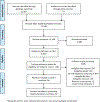Self-regulatory behaviour change techniques in interventions to promote healthy eating, physical activity, or weight loss: a meta-review
- PMID: 31973666
- PMCID: PMC7429262
- DOI: 10.1080/17437199.2020.1721310
Self-regulatory behaviour change techniques in interventions to promote healthy eating, physical activity, or weight loss: a meta-review
Abstract
Poor quality diet, physical inactivity, and obesity are prevalent, covariant risk factors for chronic disease, suggesting that behaviour change techniques (BCTs) that effectively change one risk factor might also improve the others. To examine that question, registered meta-review CRD42019128444 synthesised evidence from 30 meta-analyses published between 2007 and 2017 aggregating data from 409,185 participants to evaluate whether inclusion of 14 self-regulatory BCTs in health promotion interventions was associated with greater improvements in outcomes. Study populations and review quality varied, with minimal overlap among summarised studies. AMSTAR-2 ratings averaged 37.31% (SD = 16.21%; range 8.33-75%). All BCTs were examined in at least one meta-analysis; goal setting and self-monitoring were evaluated in 18 and 20 reviews, respectively. No BCT was consistently related to improved outcomes. Although results might indicate that BCTs fail to benefit diet and activity self-regulation, we suggest that a Type 3 error occurred, whereby the meta-analytic research design implemented to analyse effects of multi-component intervention trials designed for a different purpose was mismatched to the question of how BCTs affect health outcomes. An understanding of independent and interactive effects of individual BCTs on different health outcomes and populations is needed urgently to ground a cumulative science of behaviour change.
Keywords: Multiple behaviour change; diet; health promotion; obesity treatment; physical activity; self-regulation.
Figures






References
-
- Abraham C, & Graham-Rowe E (2009). Are worksite interventions effective in increasing physical activity? A systematic review and meta-analysis. Health Psychology Review, 3(1), 108–144. doi:10.1080/17437190903151096 - DOI
-
- Baker RC, & Kirschenbaum DS (1993). Self-monitoring may be necessary for successful weight control. Behavior Therapy, 24(3), 377–394. doi:10.1016/S0005-7894(05)80212-6 - DOI
